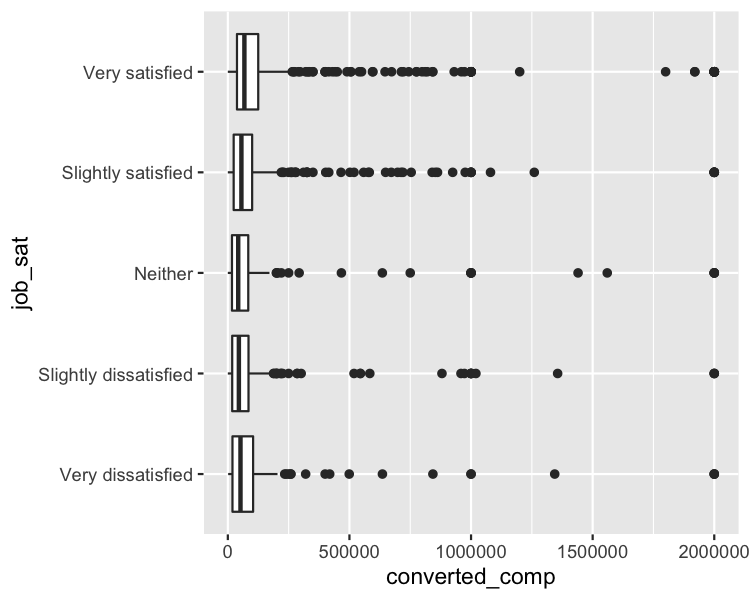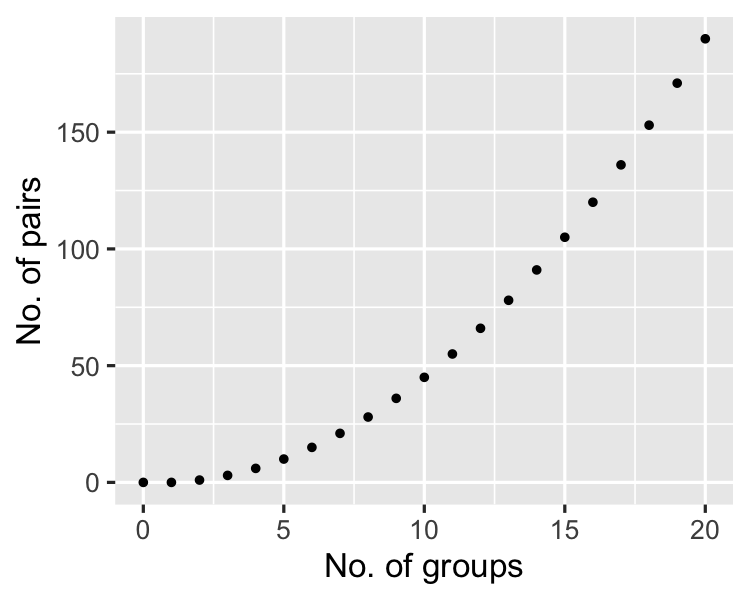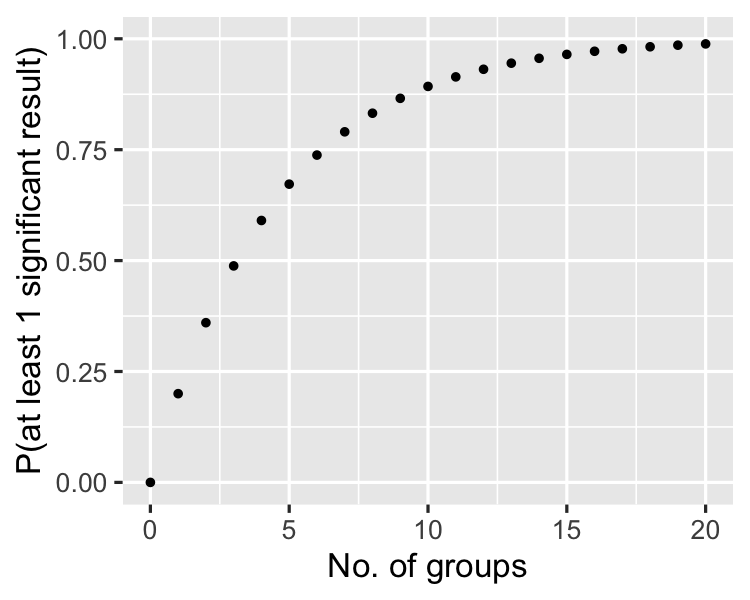ANOVA tests
Hypothesis Testing in R

Richie Cotton
Data Evangelist at DataCamp
Job satisfaction: 5 categories
stack_overflow %>%
count(job_sat)
# A tibble: 5 x 2
job_sat n
<fct> <int>
1 Very dissatisfied 187
2 Slightly dissatisfied 385
3 Neither 245
4 Slightly satisfied 777
5 Very satisfied 981
Visualizing multiple distributions
Question: Is mean annual compensation different for different levels of job satisfaction?
stack_overflow %>%
ggplot(aes(x = job_sat, y = converted_comp)) +
geom_boxplot() +
coord_flip()

Analysis of variance (ANOVA)
mdl_comp_vs_job_sat <- lm(converted_comp ~ job_sat, data = stack_overflow)
anova(mdl_comp_vs_job_sat)
Analysis of Variance Table
Response: converted_comp
Df Sum Sq Mean Sq F value Pr(>F)
job_sat 4 1.09e+12 2.73e+11 3.65 0.0057 **
Residuals 2570 1.92e+14 7.47e+10
Signif. codes: 0 '***' 0.001 '**' 0.01 '*' 0.05 '.' 0.1 ' ' 1
1 Linear regressions with lm() are taught in "Introduction to Regression in R"
Pairwise tests
- $\mu_{\text{very dissatisfied}} \neq \mu_{\text{slightly dissatisfied}}$
- $\mu_{\text{very dissatisfied}} \neq \mu_{\text{neither}}$
- $\mu_{\text{very dissatisfied}} \neq \mu_{\text{slightly satisfied}}$
- $\mu_{\text{very dissatisfied}} \neq \mu_{\text{very satisfied}}$
- $\mu_{\text{slightly dissatisfied}} \neq \mu_{\text{neither}}$
- $\mu_{\text{slightly dissatisfied}} \neq \mu_{\text{slightly satisfied}}$
- $\mu_{\text{slightly dissatisfied}} \neq \mu_{\text{very satisfied}}$
- $\mu_{\text{neither}} \neq \mu_{\text{slightly satisfied}}$
- $\mu_{\text{neither}} \neq \mu_{\text{very satisfied}}$
- $\mu_{\text{slightly satisfied}} \neq \mu_{\text{very satisfied}}$
Set significance level to $\alpha = 0.2$.
pairwise.t.test()
pairwise.t.test(stack_overflow$converted_comp, stack_overflow$job_sat, p.adjust.method = "none")
Pairwise comparisons using t tests with pooled SD
data: stack_overflow$converted_comp and stack_overflow$job_sat
Very dissatisfied Slightly dissatisfied Neither Slightly satisfied
Slightly dissatisfied 0.26860 - - -
Neither 0.79578 0.36858 - -
Slightly satisfied 0.29570 0.82931 0.41248 -
Very satisfied 0.34482 0.00384 0.15939 0.00084
P value adjustment method: none
Significant differences: "Very satisfied" vs. "Slightly dissatisfied"; "Very satisfied" vs. "Neither"; "Very satisfied" vs. "Slightly satisfied"
As the no. of groups increases...


Bonferroni correction
pairwise.t.test(stack_overflow$converted_comp, stack_overflow$job_sat, p.adjust.method = "bonferroni")
Pairwise comparisons using t tests with pooled SD
data: stack_overflow$converted_comp and stack_overflow$job_sat
Very dissatisfied Slightly dissatisfied Neither Slightly satisfied
Slightly dissatisfied 1.0000 - - -
Neither 1.0000 1.0000 - -
Slightly satisfied 1.0000 1.0000 1.0000 -
Very satisfied 1.0000 0.0384 1.0000 0.0084
P value adjustment method: bonferroni
Significant differences: "Very satisfied" vs. "Slightly dissatisfied"; "Very satisfied" vs. "Slightly satisfied"
More methods
p.adjust.methods
"holm" "hochberg" "hommel" "bonferroni" "BH" "BY" "fdr" "none"
Bonferroni and Holm adjustments
p_values
0.268603 0.795778 0.295702 0.344819 0.368580 0.829315 0.003840 0.412482 0.159389 0.000838
Bonferroni
pmin(1, 10 * p_values)
1.00000 1.00000 1.00000 1.00000 1.00000 1.00000 0.03840 1.00000 1.00000 0.00838
Holm (roughly)
pmin(1, 10:1 * sort(p_values))
0.00838 0.03456 1.00000 1.00000 1.00000 1.00000 1.00000 1.00000 1.00000 0.82931
Let's practice!
Hypothesis Testing in R

